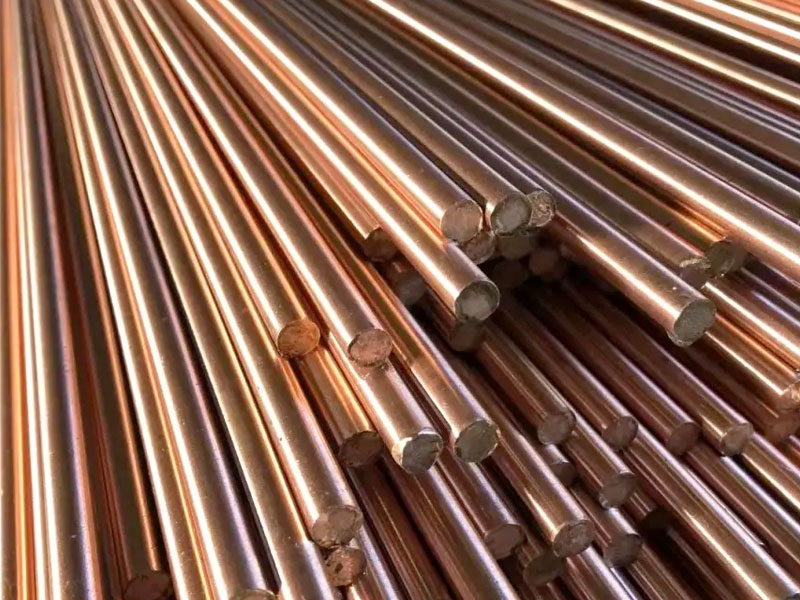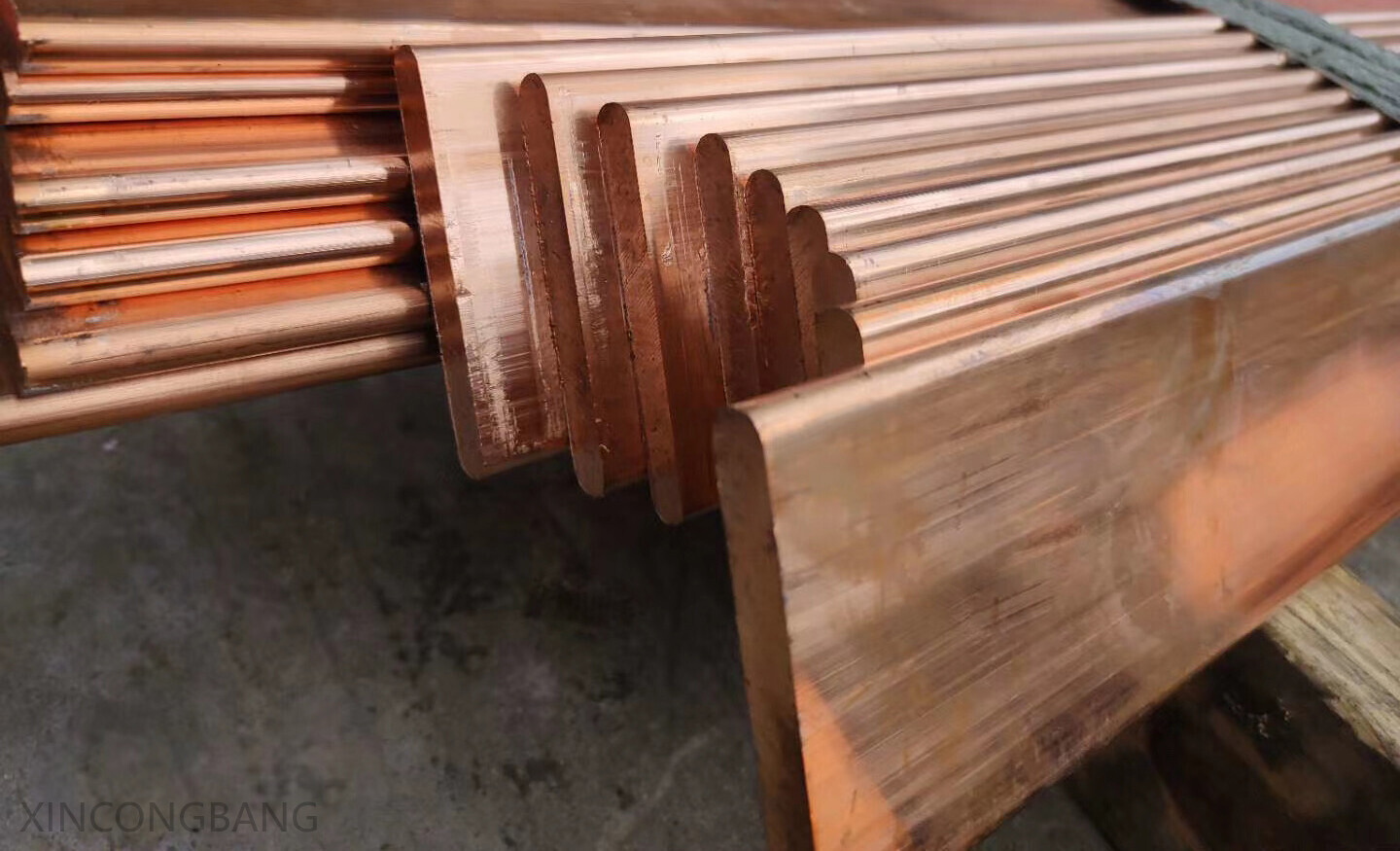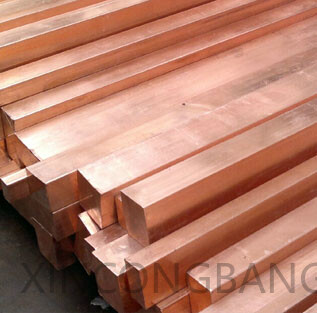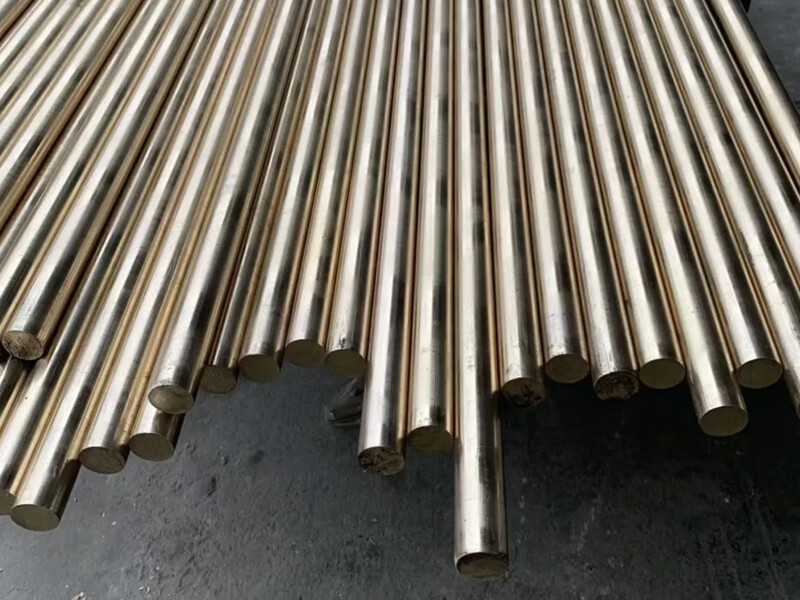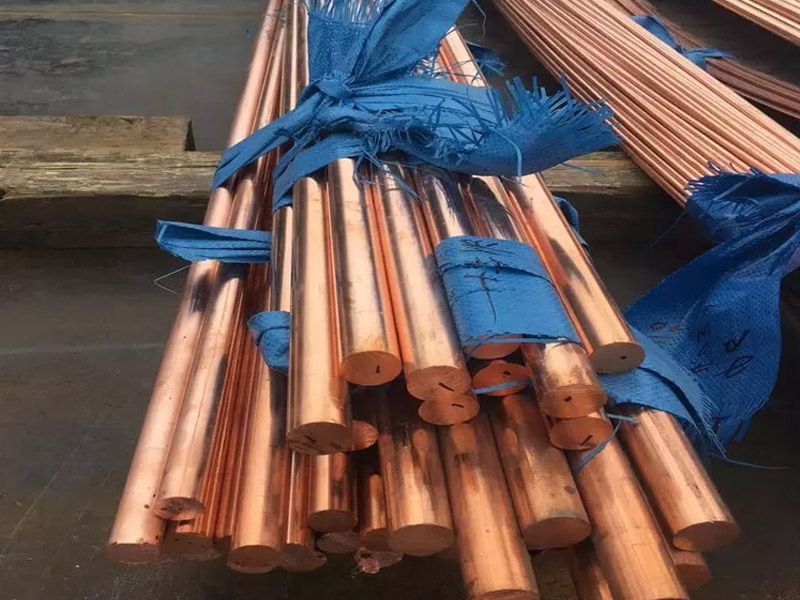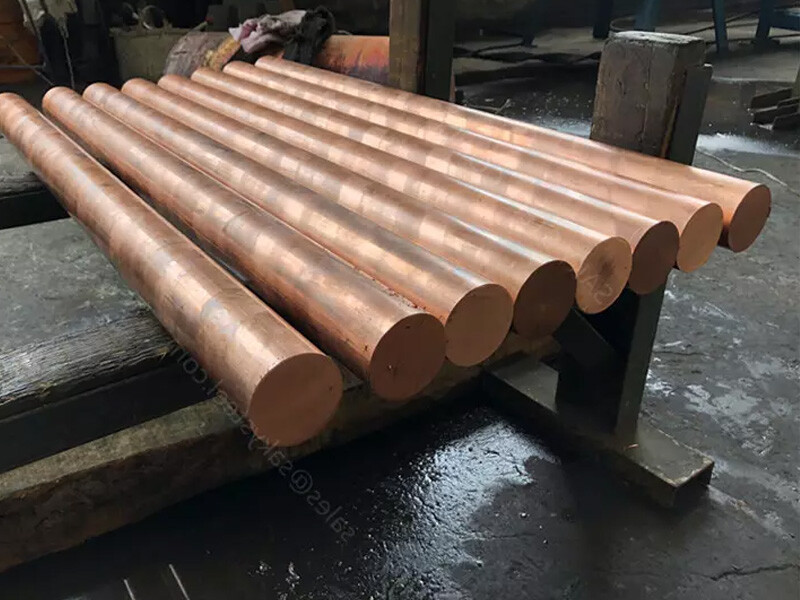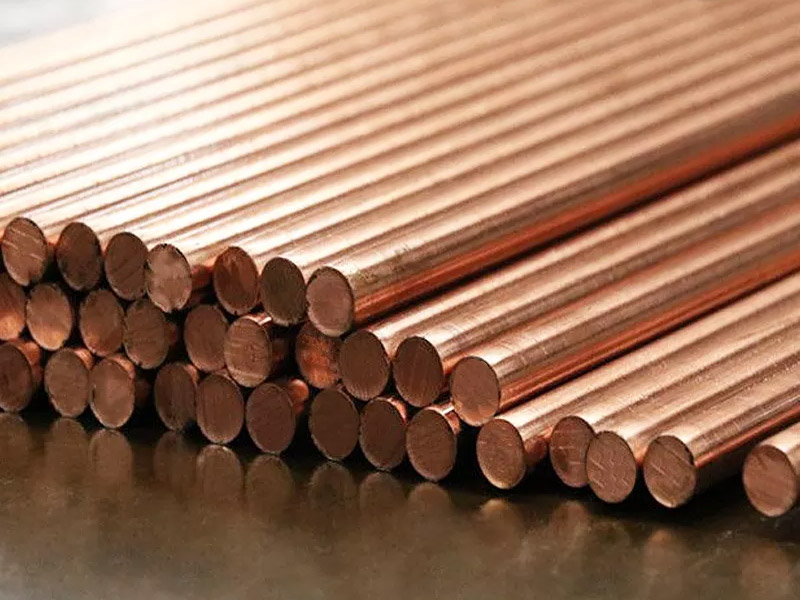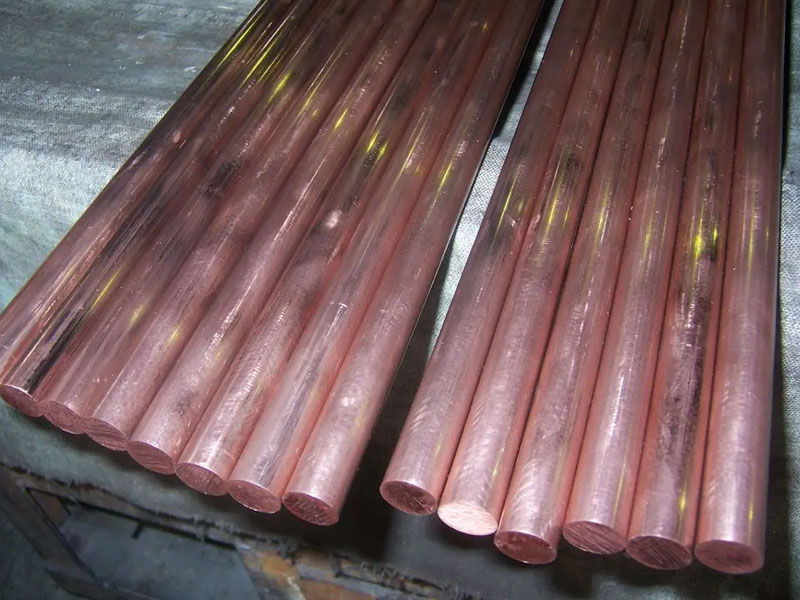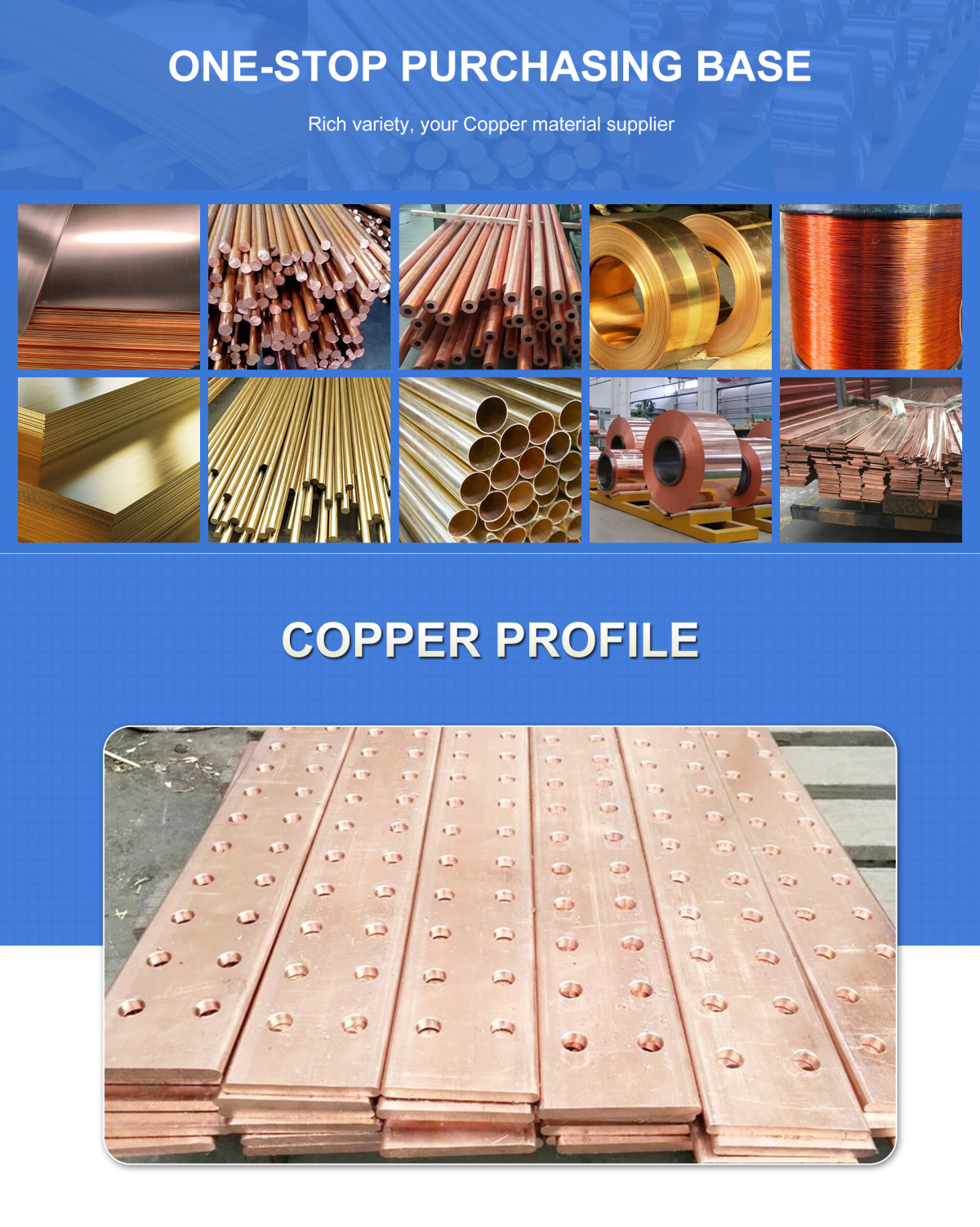
Diameter range
Extruded bars:
Bars with a diameter of ≤50mm have a tensile strength of 530MPa, a yield strength of 450MPa, an elongation of 15%, and a hardness of HRB 75.
Bars with a diameter of 51-150mm have the same performance as those with a diameter of ≤50mm.
Overall range:
According to production standards, round bar diameters usually cover 5-80mm (domestic standards)
Other dimensions
The length is generally 500-6000mm (domestic standards)
, which can be customized according to needs.
III. International standards
ASTM standards
The C18200 materials imported from the United States often comply with relevant ASTM specifications, such as ASTM B196/B196M (copper alloy bar standards).
Other standards
GB/T 5231-2012: Chinese national standard, corresponding to grade TCr1.
JIS H3250:2006: Japanese industrial standard, applicable to the dimensional tolerances and performance requirements of copper alloy bars.
Chemical composition
Copper (Cu): Balance (98.0%-99.4%)
Chromium (Cr): 0.6%-1.2% (Main strengthening element, improves strength, hardness and corrosion resistance)
Impurity limit:
Iron (Fe) ≤0.10%
Lead (Pb) ≤0.05%
Silicon (Si) ≤0.10%
Total of other elements (such as phosphorus, manganese, arsenic, etc.) ≤0.5%
Mechanical properties are significantly affected by heat treatment and processing state:
Complete cold processing + aging state (such as TH04 state):
Ultimate Tensile Strength: 530 MPa
Yield Strength: 450 MPa
Elongation: 15%
Hardness (Rockwell B): 75-82 HRB
Annealed state (such as TB00 state):
Tensile strength: 310 MPa
Yield strength: 97 MPa
Elongation: 40%
Hardness: 65 HRB
General range:
Tensile strength: 310-530 MPa
Yield strength: 97-450 MPa
Elongation: 10%-40%
Elastic modulus: 117-120 GPa
Shear strength: 210-320 MPa
III. Physical properties
Electrical conductivity: 80% IACS (International Annealed Copper Standard)
Thermal conductivity: 320 W/m·K
Density: 8.89-8.9 g/cm³
Melting point: 1070-1080°C (solidus-liquidus)
Coefficient of thermal expansion: 16.45×10⁻⁶/°C to 18 µm/m·K
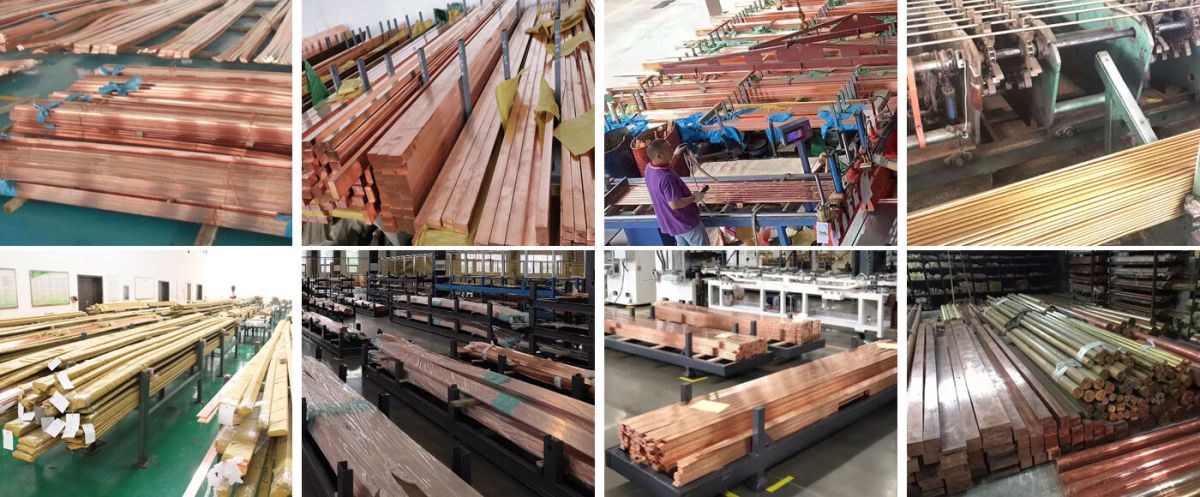
Production process and product advantages of C18200 copper rod:
1. Production process
Melting and casting process
Using non-vacuum melting technology, by controlling the addition and uniformity of chromium (Cr) (content 0.85%-1.05%), the alloy composition is ensured to be stable. The casting method includes semi-continuous casting, which solves the problem of uneven distribution of chromium elements.
Hot working and forming
Hot working: including hot forging (temperature 900-950℃), hot extrusion (temperature 820-930℃) and other processes, the hot forging can reach 80% of forged brass.
Cold working: cold drawing, cold rolling, upsetting, etc. can be carried out, but attention should be paid to cooling and lubrication to reduce friction.
Heat treatment strengthening
Quenching: water-cooled solution treatment at 950-1000℃ to improve the toughness of the material.
Aging treatment: aging at 400-500℃ for 2-4 hours, significantly improving the hardness and strength (softening strength reaches 400 MPa, which is twice that of cold working).
Process optimization
Large-size bars adopt the "semi-continuous casting + aging" process, which has the advantages of short process, high yield and low cost compared with other processes (such as hot forging + quenching + aging).
Online quenching technology combined with aging strengthening ensures that the material properties meet the requirements of high strength and high conductivity.
2. Product advantages
Excellent comprehensive performance
High conductivity: conductivity ≥80% IACS (aging state), meeting the requirements of high-temperature conductivity.
High strength and hardness: tensile strength of 460 MPa at room temperature and 400℃, hardness HRB 70-80.
Wear resistance and softening resistance: softening temperature ≥500℃, high strength is still maintained at high temperature, suitable for long-term high temperature use.
Good processing adaptability
Supports a variety of processing methods, including extrusion, forging, welding (tin soldering, silver soldering, gas shielded welding), etc., but oxyacetylene welding and resistance welding should be avoided.
The hot and cold processing performance is balanced, and the hot forging property is 80% of forged brass.
High temperature stability and corrosion resistance
High temperature oxidation resistance, atmospheric and fresh water corrosion resistance, suitable for harsh environments such as high temperature switches and welding machine electrodes.
Adding chromium elements increases the recrystallization temperature and enhances thermal strength.
Wide range of applications
Resistance welding: spot welding electrodes, seam welding wheels, etc., with better electrical corrosion resistance than pure copper.
Molds and mechanical parts: precision mold discharge machining, plastic mold components, high surface finish.
Electrical equipment: high temperature conductive and wear-resistant scenes such as motor collector rings and circuit breaker components.
Q1:Do you provide samples? Is it free or extra?
A1:Yes, we can provide samples free of charge and the customer will pay the freight.
Q2:What if I don't have export experience ?
A2:We have reliable forwarder agent which can ship items to you by sea/air/Express to your doorstep. Any way, we will help you choose the most suitable shipping service.
Q3:How long is your lead time?
A3:If it is in stock, it is usually 5-10 days. Or, if there is no inventory, 15 days, depending on the quantity.
Q4:What are your terms of payment?
A4:30% T/T deposit in advance, 70% T/T balance within 5 days after B/L copy, 100%.Irrevocable L/C at sight, 100% Irrevocable L/C after receive B/L 30-120 days, O/A.
Q5:How is your technical support?
A5:We provide lifetime online support through Whatsapp/ Skype/ Wechat/ Email. Any problem after delivery, we will offer you call anytime.
Welcome To Your Inquiry
What can we help you?
RELATED PRODUCTS



